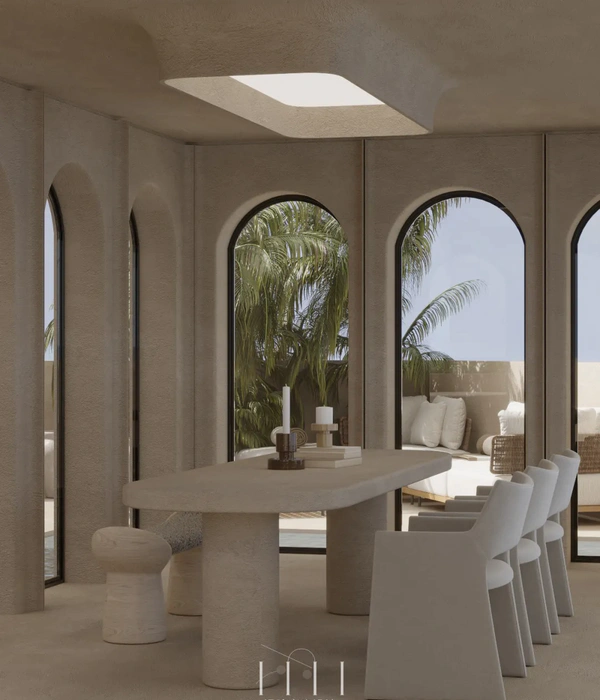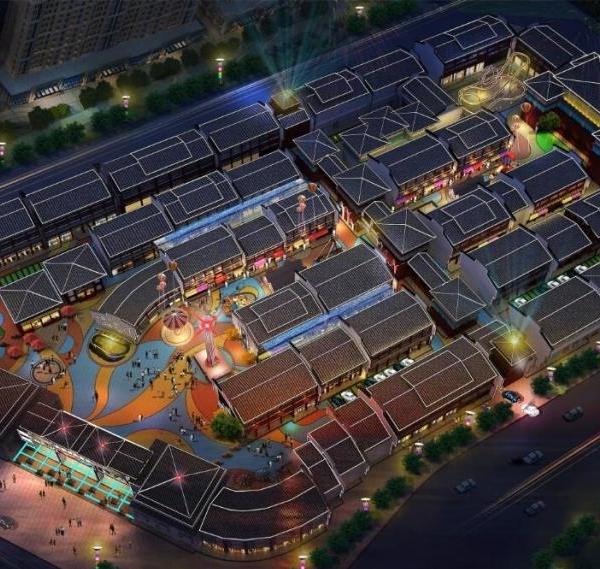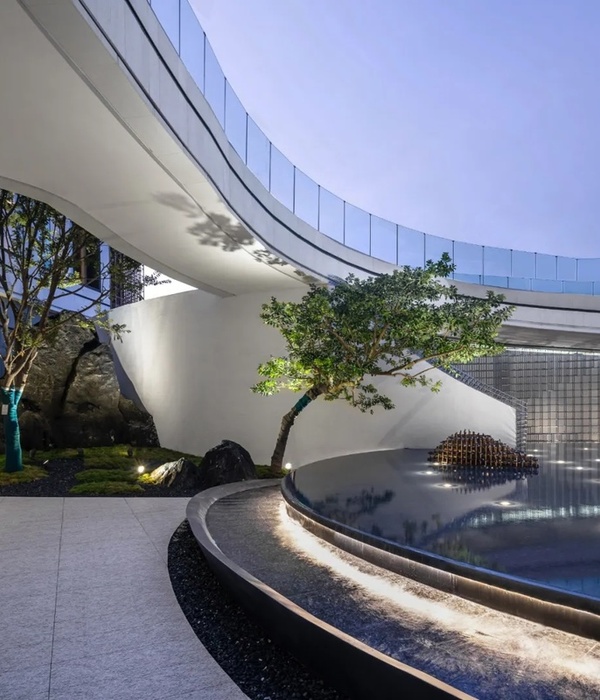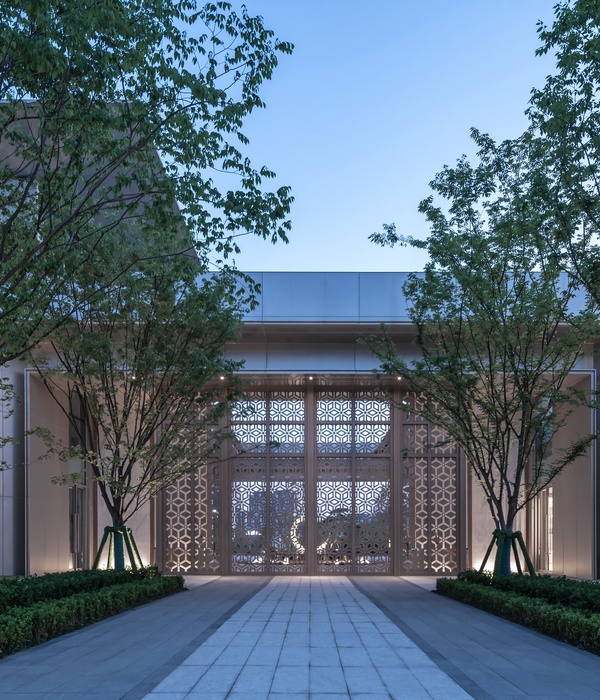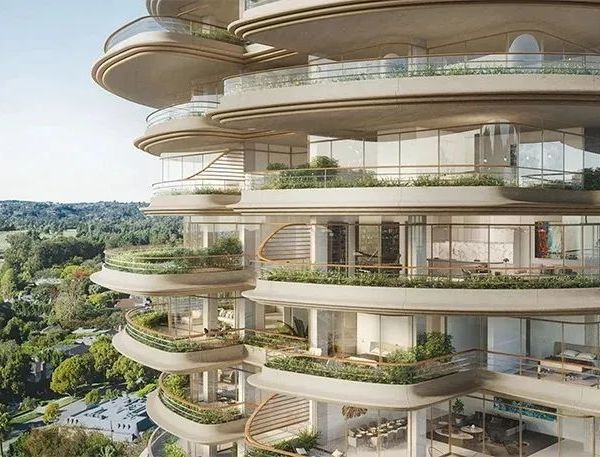来自ASLA
Indian Mounds Cultural Landscape Study and Messaging Plan | Quinn Evans Ten x Ten Allies, Inc
项目概述
PROJECT STATEMENT
在与部落代表和市政府工作人员的合作下,景观团队制定了一项整体计划,用于应对一系列困难和发人深省的挑战:在过去的两个世纪,这片原住民埋葬地被大刀阔斧地改造成了公园用地,如何才能改变当地社区对这处景观的看法,同时对原住民信仰予以充分的知情、共情与尊重?该项目代表着圣保罗市在保护、认识和理解美国印第安人重要遗址方面迈出的第一步。为此,跨学科团队进行了严肃审慎的研究,为项目的各方参与者建立了相互理解的基础。在这之后实施的文化景观研究(Cultural Landscape Study)提出了一个全面的框架:在承认其祖先埋葬地的神圣性的同时,对留存在场地中的独特遗产予以保护和凸显;更深入地理解美国印第安人遗产的价值与内涵;提高环境的可持续性和对气候变化的抵御能力;减少碳足迹;通过物理实体上的转化和信息传递来加强人们对于这处景观的认知。
Landscape Architects collaborated with tribal representatives and city staff on a plan addressing the difficult and thought-provoking challenge: How can we change a community’s perception of this landscape—an indigenous place of burial drastically altered over the last two centuries to function as a public park – toward a perspective that is informed, empathetic, and respectful of its sacredness to Indigenous Peoples? The project is an initial step to update the City’s practice for preservation, awareness, and understanding of sites significant to American Indians. The interdisciplinary team conducted rigorous research to provide a basis for a shared understanding among diverse project participants. The resulting Cultural Landscape Study presents a comprehensive framework for acknowledging the sacred site and the living Indigenous People whose ancestors are buried there while protecting, preserving and emphasizing the unique heritage of the location; strengthening appreciation of American Indian heritage; improving environmental sustainability and resilience to climate change; reducing carbon footprint; and fostering understanding through physical transformation of, and messaging within, the landscape.
印第安土丘:神圣的埋葬地。对于现在的达科他人而言,这块土地有着神圣的意义,因为他们的祖先就埋葬于此。
项目说明
Indian Mounds: a sacred burial place. The cemetery is sacred to living Dakota people whose ancestors are buried here.
PROJECT NARRATIVE简介
文化景观研究和传播计划提出了一项全面且鼓舞人心的行动指南,通过保护埋葬地、扩大本地植被、传达对于场地神圣性的认可以及清除干扰性的因素,逐步将场地转变为一个神圣、庄严且非娱乐化的场所。改造后的景观将服务于沉思和祈祷活动,有助于人们建立精神上的连接。景观干预和传播策略是在设计团队与部落历史保护官员(THPO)、项目咨询小组(PAT)、当地社区以及圣保罗市公园与娱乐部门的合作下逐步实现。来自Upper Sioux社区、Lower Sioux社区、Shakopee Mdewakanton Sioux部落、Prairie Island印第安人社区、威斯康星州的Ho-Chunk部落、堪萨斯州和内布拉斯加州的爱荷华部落以及锡塞顿-拉科塔奥亚特的历史保护官员代表直接参与了项目的讨论和磋商,对于整个设计过程起到了至关重要的影响。
项目主要内容:建立一个平台,让原住民社区能够直接参与有关这一重要遗址的改造决策。
记录景观的历史发展与使用情况,对场地的历史价值和完整性进行全面且彻底的分析和评估。
3. 在相关原住民社区的指导下,对景观的长期存续提出建议。
4. 制定传播策略,承认并帮助人们认知埋葬地本身所具有的神圣性。
此地并非公园
如今被人们称作“印第安土丘地区公园”的原住民埋葬地,在一千多年以来一直是一片神圣的领土——它作为埋葬祖先的墓园,对于仍旧存活于世的原住民而言有着不可替代的意义。这是一个与敬畏、纪念、尊重和祈祷有关的场所。1892年,圣保罗市政府在此地建立了一座公园,目的是为了保护当地历史环境及其壮观的景色,然而对于当时的原住民而言,他们与土地之间的深刻联系并没有得到理解、考虑和重视。
在过去的一个世纪,这座公园受到了周围社区的欢迎和喜爱,而事实上,大多数非原住民只是被其壮观的景色吸引,却并不了解该场地对于部落的重要意义。通过一系列公众集会,来自不同部落的代表与普通公众慷慨地分享了他们的故事和见解,这让设计团队认识到这处场地所蕴含的巨大力量,以及人们希望将其作为神圣土地来保护的强烈意愿。
应对文化景观的方法
景观设计师在研究中采取了应对文化景观的方法。首先,团队积极鼓励多方利益相关者参与合作,以便为项目树立具体的愿景和目标,尤其是要在与景观存在文化联系的群体和能够为景观提供保护的城市之间建立一种强力稳固的关系。设计团队积极听取了不同人群的意见,他们与该场地强烈的情感连接为凸显场地的重要性提供了基础;另一方面,团队也深入考察了景观本身所散发的气质与精神。通过对景观实施不同类型的改造,同时分享和传播以重塑场地尊严为目标的相关信息,该场地的神圣性得以在人们的心中重新塑造起来。
在历史研究过程中,团队利用一手和二手资料,对景观的物理变化(从地质形成到目前的状况)进行了全面的记录。研究报告中包含了一个详细的章节,叙说了该遗迹的历史,并通过图例展示了一些关键时期的景观状态。明尼苏达州的土丘建筑传统形成于居住者的流动性减少、大型部落开始聚居于半永久营地之后。居民们在这里打猎和采集,并以野生水稻和额外的种植物作为补充。用于埋葬的土丘通常位于主要水体附近的峭壁上,而村庄通常位于能够获取野生水稻的地方。密西西比河谷成为了区域的中心,人们聚集在一起举行各种仪式和活动以加强社区间的联结。
景观团队与美国印第安人后裔进行了访谈与合作,有助于广泛了解景观对于其社区发展的意义。相关社区的代表参与了项目的整个过程,以确保他们的文化观点能够为方案提供参考。
以针对文化景观的联邦条例为基准,设计团队对该地区的完整性进行了全面分析。遗址本身属于Mni Sota Makoce和Bdote(密西西比河与明尼苏达河交汇处附近地区)的一部分,后者被视为达科他的发源地。达科他人会不时来到场地上祈祷。
该项目为场地的维护和使用构建了一份名为“VISION”的整体蓝图,它以Mitákuye Ows’in为指导,反映了人与土地、水、天空、动物和植物的相互联系,鼓励通过保护、尊重并认可埋葬地的神圣性,来塑造一个与虔诚、纪念和疗愈有关的场所。该方案主要关注对神圣的保护;识别、维护或恢复重要的场地特征;引导土丘向更理想的状态转变;加强对于神圣场地、相关人群以及埋葬于此的祖先的理解
▲密西西比河流域的B’dote(汇流点)地区包含很多对于达科他人有着重要意义的区域。西方文化将边缘视为一种线索,用于表明一种事物的结束和另一种事物的开始。僵硬的边界代表着土地的控制权,这一点也和达科他人的世界观有所不同。针对观念上的差异,跨文化的表达方式是实现沟通的重要工具。The B’dote (confluence) area of the Mississippi River Valley contains many sites significant to the Dakota. Western culture applies edges as cues communicating the end of one thing and the beginning of another. Rigid boundaries also indicate land ownership, another concept not aligned with Dakota worldviews. Cross-cultural expressions are essential tools to communicate alternate perspectives.
印第安土丘是B’dote和达科他家园的一部分,它位于明尼苏达州圣保罗市中心东部的一处悬崖上,俯瞰着密西西比河。一幅1840年的画作描绘了Kap’oza的达科他村落以及建造于河流上方悬崖的埋葬地。Indian Mounds is part of B’dote and Dakota homeland. Indian Mounds is situated on a bluff overlooking the Mississippi River on the eastern side of downtown Saint Paul, Minnesota. An 1840 painting illustrates the Dakota village of Kap’oza and the burial ground on the bluff above the river.
▲悬崖剖面图,传达了“我们联系在一起”的概念。在达科他人的观念中,“所有”(all)包含了一切看得见和看不见的东西,不仅仅是动物、植物、人类、岩石、地球、水,还有意志和精神。对于许多人来说,需要转变思维,将所有的创造物看成是自己的同类,而不是物品或者财产。A Bluff Section Diagram showing the concept of Mitákuye Ows’in / We Are All Connected. Dakota people are taught that “all” includes “everything seen and unseen” animals, plants, humans, rocks, earth, waters, spirits. For many, a shift in thinking is required to see all of creation as our relative and not as objects or property.
▲景观的变化:美国政府利用条约取得了达科他人的家园并将其用于开发。埋葬地的东部被改造成公园,西部的土丘被铲平以开发街道和建筑。令人敬畏的神圣场所逐渐变成了娱乐和休闲场地。Changes to the Landscape. The US government used treaties to obtain Dakota homeland and open it to development. The eastern portion of the cemetery was reshaped into a park and western mounds were leveled for development of streets and buildings. Recreation replaced reverence.
▲未来状况的框架:景观的发展框架确定了一些针对合作关系、土丘保护、提高气候变化适应性和碳封存能力以及与文化团体的相关性的策略,并将通过阶段性的方式逐步加以实现。
Framework for Future Condition. The Framework for Landscape Condition identifies strategies for partnership, preservation of mounds, improved resilience to climate change, carbon sequestration, and relevance to cultural groups, as well as appropriate maintenance strategies, applied through a strategically phased approach.
▲生态学和文化带来的转变:密西西比河沿岸的崖顶曾经覆盖着生态丰富的草原、硬木森林、橡树草原和橡树林。埋葬在此地的祖先和他们的后人与这片土地有着直接的联系,通过生态干预,可以进一步加强这种关联。
Transformation informed by Ecology and Culture. Blufftop landscapes along the Mississippi River were once ecologically rich Prairies, Hardwood Forests, Oak Savannahs and Oak Barrens. The ancestors buried here and their living relatives have direct ties to this land that can be strengthened by ecological interventions.
▲本地植物是支撑文化联系的可持续方法的核心。设计建议将人行道和经过修剪的草坪转换为本地植物群落,以改善生境和地下水补给。其中需要包括对部落成员具有文化意义的植物物种。
Native plants are the core of a sustainable approach that supports cultural connections. The design recommendations convert areas of pavement and mown lawn into native plant communities to improve habitat and groundwater recharge and include plants with cultural meanings to tribal members.
▲第1阶段的景观状况:在实施的最初阶段,建立了由本地植物和信息提示物构成的门槛,以突显神圣场地、用本地植物群落替换选定的修剪区域、实施交通缓和措施,并移除具有干扰性的元素。Phase 1: Landscape Condition. Establishment of a threshold of native plants and messaging cues to acknowledge the sacred site, conversion of selected mown areas to native plant communities, application of traffic calming, and removal of impactful elements, occur at the initial phase of implementation.
▲第2阶段的景观状况:在第二阶段,本地植物和信息提示门槛被扩展至场地的北部边缘,建立了草原和橡树草原区域,人行道被替换为本地植物,并减少了进入土丘大道的部分路径。Phase 2: Landscape Condition. In Phase 2, the native plant threshold and messaging cues are extended to the northern edge of the property, prairie and oak savannah areas are established, pavement is replaced with native plantings, and access to a portion of Mounds Boulevard is reduced.
▲第3阶段的景观状况:本地植物和信息提示门槛得到了进一步扩大,游乐场和野餐区域被草原取代,位于厄尔街的进入路径受到限制,碳封存量得以增加。Phase 3: Landscape Condition. Native plant thresholds and messaging are further expanded, playground and picnic areas are replaced with savanna, Earl Street access is limited, and carbon sequestration is increased.
全场地的信息传播方案:“即时确认”、“提示门槛”以及“数字媒介”三项策略为全场地的信息传播提供了指导。
Site-wide Messaging Plan. Three strategies direct site-wide Messaging – Immediate Acknowledgement, a Threshold of Cues, and Digital Media.
▲区域信息传播局部平面:景观中加入了特别设计的装置,以创造更有力量的印象,改变非原住民对场地的看法,同时也能让原住民感受到友好与亲切。Area Messaging Detailed Plan. Features are added to the landscape to create powerful impressions to shift perceptions of this place for non-Indigenous visitors and help Indigenous people feel more welcome.
全场地的信息传播:“门槛”是一条横跨整个场地的信息传播带。这里的本地植物、长椅、垫脚石、植物标记和旗帜标识传达了关于达科塔土地的信息和荣誉。所有新增的景观装置都可以实现自主支撑,避免了对土地的破坏。
Site-wide Messaging at the Threshold of Cues. The threshold is a consistent band of messaging spanning across the site. Here native planting, benches, stepping stones, plant markers, and flag signs share messages of Dakota Land and honor. All proposed features are self-supported to avoid disruption of the ground.
▲门槛的演变:“提示门槛”会随着公众对变化的适应而逐渐演变。最初它是一条清晰的植物带,包含达科他州认证的疗愈性植物;随后被垫脚石构成的路径一分为二,种植范围逐渐扩大,最终形成遍及场地的草原。Threshold of Cues Phasing. The Threshold of Cues evolves over time as the public adjusts to changes. Starting as a clear band of Dakota-identified healing plants bisected by paths of stepping stones, the plantings are gradually expanded , establishing prairie across the site.
重塑神圣的景观:既有的停车场就修建在埋葬场区域,对该区域的改造需要采取敏感的办法:打破路面,增加土壤和本地植物以允许水的渗入,重新建立自然的水系统和栖息地,实现碳封存,最终让这片神圣的场地得到治愈。
Reclaiming the Sacred Landscape. The existing Parking lot is on the site of burials, and its transition requires sensitive treatment. Breaking pavement, adding soil and native plants, allows water to percolate, reestablishing natural water systems and habitat, sequestering carbon, and healing the sacred site.
PROJECT NARRATIVEINTRODUCTION
The Cultural Landscape Study and Messaging Plan presents an inspirational and holistic guide to gradually replace recreational features and activities with preservation of the burial ground, expansion of native plants, messaging acknowledging the sacred site, and removal of impacting elements. The transformed landscape will support use for contemplation, prayer, and connections, for people to whom it is sacred. Landscape interventions and messaging strategies were created through an iterative and collaborative process with the Tribal Historic Preservation Officers (THPOs), the Project Advisory Team (PAT), the community, and the City of St. Paul Parks and Recreation Department. Direct engagement and consultation with the THPOs from the Upper Sioux Community, Lower Sioux Community, Shakopee Mdewakanton Sioux, Prairie Island Indian Community, and The Ho-Chunk Nation of Wisconsin, the Iowa Tribe of Kansas and Nebraska, and the Sisseton-Wahpeton Oyate—was essential to the process.
THIS PLACE IS NOT A PARK
The Indigenous burial ground that is currently called “Indian Mounds Regional Park” has been a sacred burial ground for over a thousand years. It is significant to living Indigenous Peoples as a cemetery where their ancestors are buried. It is a place of reverence, remembrance, respect, and prayer. When the City of Saint Paul established a park in this location in 1892 with the purpose of protecting the historical setting and spectacular views, connections of contemporaneous Indigenous Peoples to the sacred site were not understood, considered, or valued.
Over the last century the condition, name, and use of the landscape as a park have become beloved to the surrounding community. Yet many non-Indigenous people have wondered about this powerful landscape without understanding its importance to tribes. Through public gatherings with generous sharing by tribal representatives and members of the public, we learned that the power of this place affects the people who interact with it, and there is a strong desire to protect it as a sacred site.
CULTURAL LANDSCAPE APPROACH
The Landscape Architects applied a cultural landscape approach to the study. This began by facilitating a collaborative process including diverse stakeholders to develop a vision and goals for the project. We paid careful attention to building a strong relationship between the people culturally connected to the landscape and the city who maintains it. We listened to the people whose passionate connections to this place provide the basis of its significance; and to the landscape itself that exudes a spiritual sense of place. The sacredness of this place is communicated through a variety of changes to the landscape and sharing of messages that aim to build respect and restore dignity.
Historical research utilized primary and secondary sources to develop a rich account of physical change in the landscape beginning with its geological formation through its current condition. The report includes a detailed chapter recounting the history of the site, with diagrams illustrating landscape conditions at key time periods. The tradition of mound building in Minnesota was initiated during a time when people became less mobile and larger communities came together to live in semi-permanent camps. People continued hunting and gathering and supplemented this with harvesting wild rice and gardening more intensively. Burial mounds were often located on elevated bluffs near major bodies of water, while villages were often located to provide access to wild rice. The Mississippi River valley was a regional center where people came together for ceremonies and events to reinforce communal ties and forge alliances.
Interviews and collaboration with descendant American Indians contributed a broad understanding of the meaning of the landscape to their communities today. Representatives of the associated communities were included throughout the project process to ensure their cultural perspectives informed recommendations.
A thorough analysis of integrity was conducted based on federal guidelines for cultural landscapes. The site is part of Mni Sota Makoce, Dakota homeland, and Bdote, the area surrounding the confluence of the Mississippi and Minnesota Rivers that is significant to many Dakota people as a place of origination, where the Dakota emerged. Dakota individuals come to the site to pray.
The VISION for acknowledgement, care, and use of the site, is informed by, and respectful of, it as a sacred place. The VISION is guided by Mitákuye Ows’in, reflecting the interconnectedness of people, land, water, sky, animals, and plants, to provide a place for reverence, remembrance, and healing in a way that protects, honors, and acknowledges the sacred place of burial. Goals focus on protection of the sacred site; identification and preservation or restoration of important characteristics; guidance toward the desired condition of the mounds; increased understanding and respect of the sacred burial ground, relatives, and ancestors who are here; identification of appropriate experiences; and establishment of a partnership between the city and tribes to guide use and care of the site.
{{item.text_origin}}

